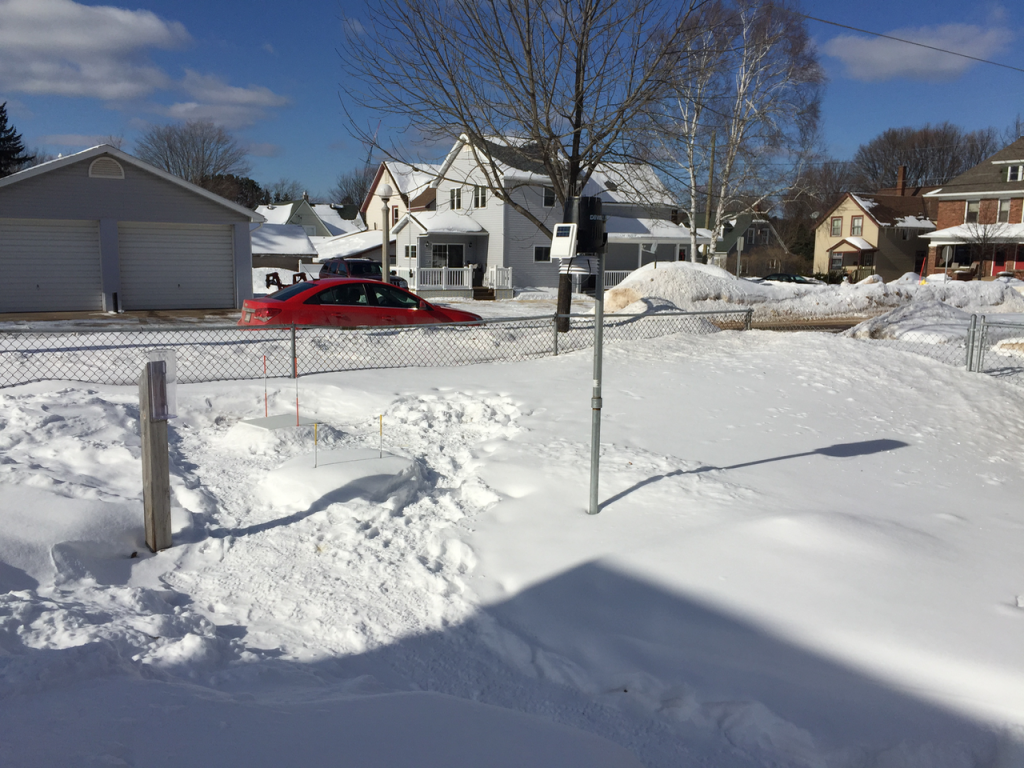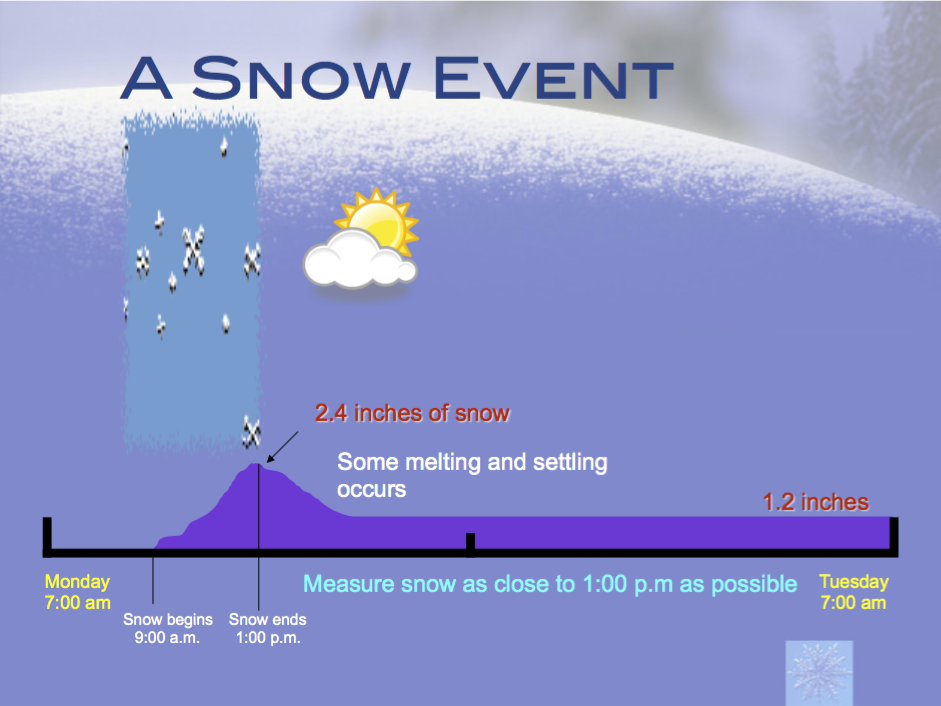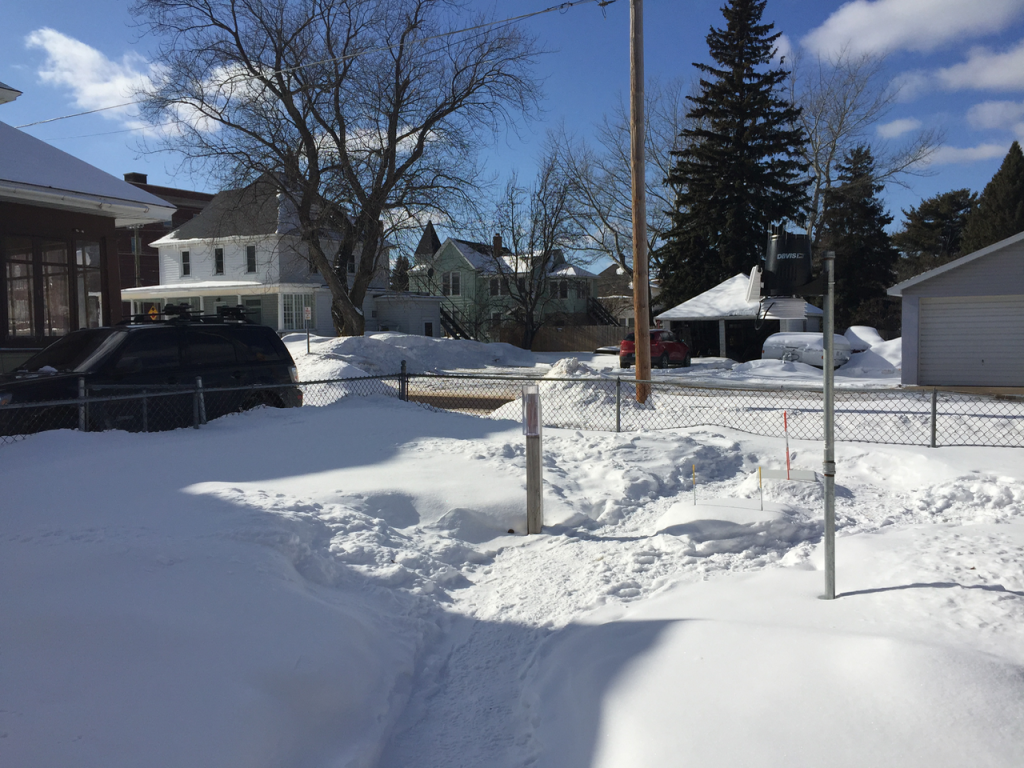
Over the last 30 years, the city has averaged 117.2” per year of snow. That’s based on measurements taken every morning close to the lakeshore (at the Water Filtration Plant which houses the official COOP weather station for Marquette, MI).
A few days ago we added a “Seasonal Snow Total” entry to the Almanac section on the home page. This should provide some insight into the kind of winter we are having. Currently, the official weather station is seeing below average snowfall so far (55.1″) while we are experiencing above normal totals (83.6″).
Here at marquetteweather.com, located 1/4 mile south of downtown and approximately 100 ft above the lakeshore, we measure up to 4x daily. According to the Community Collaborative Rain, Hail & Snow Network (CoCoRaHS), if snow stops falling midday, measuring the next morning can mean up to a 50% reduction in measurement (see below).

Comparison & Conclusion

So how do our numbers compare to the official record books? Last month we recorded about 35% more snow than the COOP station. For the 2017-18 season (beginning 10/1/17), we are running about 50% ahead. I’d say most of that difference is measurement frequency plus better exposure to prevailing winds. The COOP station collects snow about 20 – 40 ft away from a 25 ft high building that could potentially block snow coming from the S/SW/W/NW (common wind directions in town).
In fairness, we likely measured some wind-blown snow that a less residential location would have escaped.
Also, some of the extra could be due to our higher elevation (730 ft) vs the city Water Filtration Plant (615 ft). According to Tom Niziol of the Weather Channel, a good rule of thumb is that for every 100 ft elevation gain expect 10″ of extra snow per season.
A couple seasons are hardly the basis for a scientific conclusion, but my wild guess at this point is that the central core of Marquette (~650 ft elevation) may receive 20 – 30″ more per year when measured optimally. That’s quite a challenge in a windy, urban environment!
We will continue to measure and report what we find. In the meantime, you can find historical snow totals and normals on our Data page.
